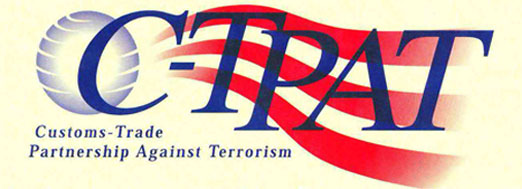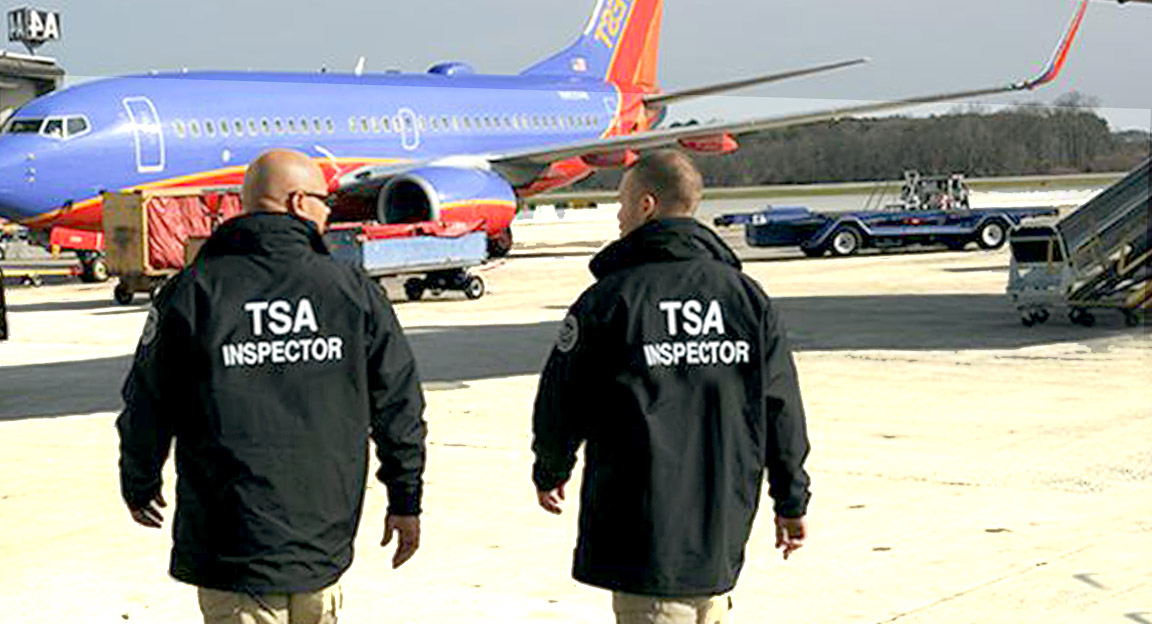Customs Trade Partnership Against Terrorism Member
The C-TPAT program is U.S. Customs and Border Protection’s (CBP) premier trade security program. The purpose of C-TPATis to partner with the trade community for the purpose of securing the U.S. and international supply chains from possible intrusion by terrorist organizations.
As a member of the C-TPAT we believe we have an obligation to strongly encourage you to take part in this program to ensure secure borders. Should you already be a participant, we kindly request you to let us know your SVI number or supply us with your certification in a supply chain security program being administered by a foreign Customs Administration.
For our partners, not yet a member of the C-TPAT, we recommend that you visit CBP’s web-site www.cbp.gov and search under “C-TPAT” it will provide you with all necessary information, or simply contact us for assistance.
Our partners engaged in carrying containers and warehousing should follow the seven-point inspection process for container loading as well as the seventeen-point inspection for all trailers/tractors. Information can be found on the C-TPAT Secure Communications Portal, under ‘Document Exchange” and below.
For our local and overseas partners, involved in container loading and dispatch, we kindly ask them to adhere to the current PAS ISO 17712 standards for high security seals. Again by visiting CBS’s web-site you will find all necessary details.
C-TPAT is a joint government-business initiative to build cooperative relationships that strengthen overall supply chain and border security.
C-TPAT recognizes that Customs can provide the highest level of security only through close cooperation with the ultimate owners of the supply chain— importers, carriers, brokers, warehouse operators and manufacturers.
Through this initiative, Customs is asking businesses to ensure the integrity of their security practices and communicate their security guidelines to their business partners within the supply chain.
Container and Trailer, Security
Whether you are a C-TPAT member or not, it is critical for you to have security procedures in place at the point of stuffing, procedures to inspect, properly seal and maintain the integrity of the shipping containers and trailers. Below are the seven-point inspection process for empty containers prior to the loading the cargo, as well as the seventeen-point inspection process for all trailers/tractors. They should read passed on to your suppliers and be followed.
Container Inspection
Procedures must be in place to verify the physical integrity of the container structure prior to stuffing, to include the reliability of the locking mechanisms of the doors. A seven-point inspection process is recommended for all containers:
- Front wall
- Left side
- Right side
- Ceiling/Roof
- Inside/Outside doors
- Outside/Undercarriage
Container and Trailer, Seals
The sealing of trailers and containers, to include continuous seal integrity, are crucial elements of a secure supply chain. Seals used to secure loaded containers and trailers bound for the U.S. must meet or exceed the current PAS ISO 17712 standards for high security seals. All loaded U.S.-bound containers and trailers must have a PAS ISO 17712 high-security seal affixed. When necessary, you need to institute procedures for recognizing and reporting compromised seals to CBP, us or the appropriate foreign authority.
Container and Trailer, Inspection
Procedures should be in place to verify the physical integrity of the trailer structure prior to stuffing, to include the reliability of the locking mechanisms of the doors.
- 17 Point Tractor and Trailer Inspection
- Bumper
- Engine
- Tires (truck & trailer)
- Floor
- Fuel tanks
- Cab / storage compartments
- Air Tanks
- Drive Shafts
- Fifth Wheel
- Outside / Undercarriage
- Floor
- Inside / Outside Doors
- Side Walls
- Ceiling / Roof
- Front Wall
- Refrigerated Unit
- Exhaust


